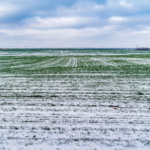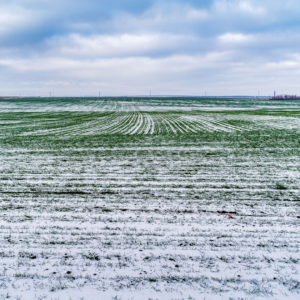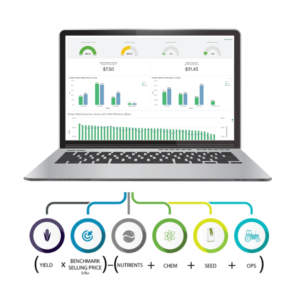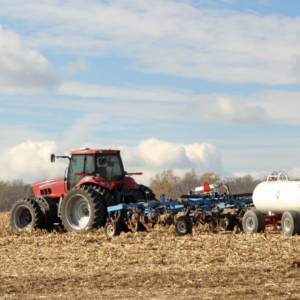
This week on the Premier Podcast, we are talking with Bethany Bielecki from Greene Crop Consulting. We discuss the situations she’s experienced while getting Greene Crop’s Pay Dirt program off the ground.
Renee: Hi, Matt, Matt and Bethany. Welcome to the Premier Podcast today. Excited to have you both. Bethany is with Greene crop consulting and Matt Bowers is with Premier Crop and I’ll have you both introduce yourself.
Matt: Good morning, Renee. Thanks for having me on, like Renee said, my name is Matt Bowers and I’m the Strategic Account Manager for our Eastern Business Unit. I cover east of the Mississippi River for Premier Crop Systems and work with our partners throughout my region.
Bethany: My name is Bethany, and like Matt said I’m with Greene Crop Consulting. So Greene Crop Consulting is a partner organization of Premier Crop and within Greene Crop Consulting, I run the Pay Dirt program as we call it.
Renee: Awesome. Well, I appreciate you both getting back on and doing another podcast with us as we continue to bring content to our listeners that they find valuable and be able to help their operations. So thank you for joining us today.
Bethany: Thank you guys for having me. I’m excited to be here.
Matt: We’ve got a few questions today. I know that we’ve been working with you and the Pay Dirt program and Greene Crop here for just over a year getting the program up and running. Bethany, you’ve had an opportunity to walk a grower through a year with Pay Dirt and using Premier Crop. How has that experience been and how have those conversations been going?
Bethany: I think the first thing that comes to mind is eye opening and gratifying. I think as an outsider, looking in, you look at a program like this and you start with thinking, well, why does a grower need a partnership like this and why do they need an in-depth management program? Can’t they do it themselves? And this is what the practice of the matter is. There’s plenty of people that can, but can a lot of them benefit from something that’s more in depth like this? So, in walking through the year and working with growers, I think that my eyes have been opened to how much there is to track and how much there is to manage. And that’s coming from someone with a decent agriculture background. And the same thing for the growers that are connecting all of these dots, is really a lot of data for one person to manage. They’re starting to see the benefit of having a partner and having someone that can walk with them through the year and through different pieces of the operation and help them connect the dots. They’re utilizing all of their various data inputs. For me, it’s been really gratifying to be able to gain that knowledge and work closely with those growers and be able to deliver them quality analytics at the end.
Matt: You covered the second question I had, which was about an eye opening process that you and your grower have found. I think that the grower is understanding that it’s not just a system or not just a program, but it’s a true partnership that you guys have together. You’re walking down this road together with them and, and learning as you go as a partnership.
Renee: And Bethany, I have a question too. You mentioned eye opening and connecting the dots. What specific dots have you had to connect for the grower that they’ve, they felt has been eye-opening as well?
Bethany: Yeah, absolutely. I think the first thing that comes to mind is the data troubles and data management problems. I think of one specific example where there’s really been a lot of dots for me to connect. I think that the grower really saw the value in having me there and having this program there. And that was one grower who I brought on late in the season. Here we were in October trying to collect historic data, as well as planting data. Thankfully for me, we had a rainy October, so I was able to catch them here and there. But what we actually found was that they had problems with their mapping for this year’s yield data. We went looking for planting data, what we actually found was that the GPS wasn’t properly set up for the new combine.
They saw, they had one old monitor that was an Ag Leader monitor in there that they were using for guidance lines. And then they had the Pro 700 monitor that they weren’t thinking they were mapping on, and as it turns out, they weren’t. So we had to dig further into that. We had this mapping and monitor problem and, going through multiple different channels the team at Premier Crop was wonderful at trying to figure out what in the world went on, that we didn’t have yield maps and then piecing together how we were going to make this work. Even once we figured out that there were no yield maps and there was no way to get yield maps. But the silver lining in all of this was that we were able to connect those dots mid-season and get them prepared for the remainder of harvest and actually get the necessary people out there to get the technology set up correctly so that we could have yield maps for the remainder of the year. And the grower could still see and receive the value out of that.
Renee: That’s a huge problem to solve knowing that, thinking that you’re collecting all this data and can utilize it, or maybe that the numbers are right. And, in fact, the data wasn’t even there.
Bethany: Absolutely. And I actually have a friend who works at CNH in the engineering department. We even sent things off to them and we were troubleshooting left and right. I mean, we tried everything and, as it turns out, it was a GPS connection problem. It was a hard thing to have happen, but we were really happy that it happened really early to mid-harvest and we were able to have time to correct things before we continued on after the rain.
Renee: Yeah. And that’s a pretty unique case I would say too.
Matt: With every startup of a program we’re not going sit and say that everything always runs smooth and perfect. And that was one of your struggles that you mentioned, were there any other struggles as you’ve gotten started with other growers or setting the program up as you’ve worked your way through?
Bethany: I think you kind of touched on it there a little bit that starting a new program is really a feat all of its own. To provide a little bit of context and background, we started this program within Greene Crop Consulting in 2020, but it really didn’t hit the ground. Really wasn’t pushed to customers until 2021. So I came on in March of 2021. And there were three month’s worth of laying the groundwork, putting together what, our branding, how exactly this was going to work in conjunction with our existing offerings and making sure that we had done all of our homework and had a quality offering to bring to our customers. And so that was a feat all in all on its own.
In addition to that, we were bringing customers on in June, July, August and September. That was a pretty heavy onboarding period for me. Then it was going back into the year trying to recreate what was done for the year to put the pieces together. I had one customer that I had just gotten through reconciling a whole bunch of their stuff for this year. We were dotting all of our I’s and crossing all of our T’s that we thought. When reconciling invoices with shareholder and entity reports, we had an entire hybrid that was missing. It was important for me to sit down with the customer and try to figure out, who planted what, what day was it planted? What day did we plant this field? Trying to piece together where that hybrid may have gone, making sure that all of the math added up and that we had the appropriate amount of units allocated and just trying to put the puzzle together in December, rather than June or May when we actually should have been doing it.
So that’s definitely been a little bit of a struggle we’re recreating a lot of things at a time when we really should be finishing things, but that’s the nature of the beast when you, when you start a new program and you onboard mid-season.
Matt: Leaning into that a little bit is the grower that I was working with. We sat down last week and we realized that all the soybeans that we brought in 50% of what we had brought in from the monitor were not the right soybeans that were planted in that field. And until we sat down in the truck and all went through it together with all the entities in the vehicle talking about it, did we realize where, where things should be.
So we’re adjusting those things so we can get the proper data back out to ’em. So I had the same experience that, that you have had with the new grower and within that, you know, I’ve got in my head plans of what my spring looks like with that particular or grower, do you have some things set out looking at 2022 now that you’ve met with these growers and, and have brought their data in, do you have some plans laid out for what, how it looks a little bit different for you in 2022?
Bethany: Absolutely. So I joke with one of my growers that I have a desk in their office now in their shop. I’m going to come set up there at least once a week to go through things. And I have one customer that I told them: “Okay. You know, when you start planting, I’m going to call you every day and ask you what you did that day.” My more personal goal on a more realistic note is to be in contact with each of my customers and each of my growers, at least once a month and some more frequently. During planting and harvest on a more frequent basis so we can troubleshoot as we go when it’s a little bit more fresh in their minds. I’m hopeful that constantly contacting them will help them remember, “Hey, I did this and I should let her know.”
Matt: How has that been received by the grower? I know there can be different reactions.
Bethany: Most of them have really been very positive. They laugh and they chuckle with me, they find the humor in it. And I think too, that most of them see a lot of value in having me walk, hand in hand with them. I feel a lot more confident in the service that we’re providing and the product that we’re delivering to them, because they feel confident that I truly know what happened and that we’ll have an intelligent conversation about everything that’s happened on their farm that year. When we come to the end of the year and we’re really digging into those analytics and trying to figure out how we can improve that yield efficiency score, they’ll feel confident knowing that I’ve been there every step of the way.
Renee: What are some of the goals that the growers are asking you based on the data that you’re collecting?
Bethany: We have had such an array of different goals. And that’s been one of my favorite things about presenting this product to our customers. I feel like we haven’t really taken this product to anybody outside of our current customer base, but the reception of it has been so different in so many ways, just by different growers. I mean, I feel like we’ve got a fairly standard baseline with our customers. They’re all involved in our soil fertility program. They’re doing similar types of things in terms of their fertilizer management, but they’ve all come into the program or have learned about the program and had different goals. I know nitrogen has been a really, really big one and probably my most popular goal that growers have entered this program with is fine tuning their nitrogen rate and figuring out how they can be more efficient, both agronomically and economically.
I have one grower that came to me saying, “Okay, I know I could do this agronomically and it would probably, really boost things, but I also need to know the economics behind it too. I need to make sure that it’s going to pay off. That’s where this program really stood out in comparison to other options that he was looking at. I had another grower that specifically wants to know whether one farm, one entire farm is worth him continuing to pay cash rent on because he says, it’s their cheapest cash rent, but it also always brings down their yield average. So how can we make sure that that farm is consistently producing quality revenue for them and make sure that that yield efficiency score is leveled closer to the remainder of his operation.
Renee: Yeah. I love that. Especially the owned versus rented. I think it really helps the grower understand if they need to continue renting that land based on the Yield Efficiency Score, if they’re profiting off of that. You had mentioned nitrogen efficiency, in your area, there’s a lot more regulation isn’t there when it comes to nitrogen or any kind of regulatory needs?
Bethany: Currently we have mostly stated the nitrogen regulation piece of it, but there’s a lot of concern and there’s a lot of chatter about that. There may be some regulation at some point in the future.
Renee: Yeah. When we were out in that area, this fall, there were a lot of growers we met with we’re talking about how they really want to optimize their nitrogen and they’re also utilizing more cover crops.
Bethany: Yeah, absolutely. And we’ve definitely seen the cover crop piece of it. We actually have a cover crop program within Greene Crop Consulting. So to kind of back up and show you the umbrella piece of it, Greene Crop Consulting is the main business and then within Greene Crop Consulting, we have the soil fertility program, which is our soil sampling and recommendations program. We also have two individuals in the office of crop insurance agents. And then we’ve got me over here doing Pay Dirt. Within the soil fertility program, actually we have a partnership with Owen and Morgan counties and their soil and water conservation district. In addition to offering these single and multi-year sampling programs and crop specific fertility recommendations, we also through this partnership are utilizing the Haney test to measure nitrogen and carbon relationships within the soils. And then these test results are utilized to make appropriate cover crop recommendations. This has been a new program for us. This is the first year that we’ve had it and it’s something that we’ve then hoped to parlay into Pay Dirt and analyze the cover crops to economics and agronomics and tie all of it together in the future.
Renee: Yeah. That’s excellent information to note. And just within Premier Crop, you guys are able to analyze that through queries that we’ve set up for you guys too. Yeah. I knew there was a lot more going on in that, in that particular area.
Matt: The carbon market has been something that has gotten a lot more public discussion in your area. The carbon market companies have offered more and more programs for different larger companies. Has that got any traction with the growers? Is that something that they’re thinking about discussing or at least exploring?
Bethany: We really haven’t heard too much talk about it within our current customers. I mean, most of them, it’s still very preliminary. They’re just hearing talks about it in the news and things like that. So I anticipate it’s going be something over the next couple of years. I think looking five years down the road, it’s going be something that we’re going to have established programs for and things like that. But as of right now, shockingly, we don’t really have a ton of customers that are interested or involved in those types of programs.
Matt: Bethany, what successes have you seen in this first year, so far as you’ve brought a number of growers into our system?
Bethany: Well, I think the first success is just being able to get quality data in. It’s really rewarding to see all of that time spent putting the puzzle together, come into play when you get things actually into Premier Crop Systems and are able to deliver quality analytics to customers. I mean, that’s been a big win for me. There’s been a learning curve with me, with the growers. Gathering that quality data is a huge win. We were also able to execute a nitrogen trial with one of my customers this year with two enhanced learning blocks. That was really exciting for me. When I first came on in March, the Enhanced Learning Blocks were a little terrifying. I was a little scared of them, but Matt and my boss, Danny, very much pushed me to just do it. So I’m excited that we were able to execute and it went over well, we’re able to get some really usable data out of that trial.
Renee: Tell me a little bit more about the learning blocks that you tried. You know, it’s sometimes just trying that one thing for the first time can be such a hurdle, but then it turns out to be a success. What were some of the enhanced learning blocks that Danny and PayDirt really wanted to get some data for in your area?
Bethany: Definitely nitrogen is huge. We have already talked to some of our growers next year about wanting to put out some Enhanced Learning Blocks. Population trials is another one that I think we’re going to see a lot of next year. I mean, just continuing to progress agronomically and economically everybody seems to want to really fine tune as much as they possibly can. The growers with the equipment to execute those trials have really shown a lot of interest in placing one in a very substantial amount of their fields, just so they can learn and gather as much information on their farm as possible.
Renee: So have most of your growers already been using variable rate or are they flat rating?
Matt: A fair amount of my customers have the capability, but actually we haven’t been variable rating. I was really surprised in the onboarding processes and sitting down doing discovery and figuring out what does this operation look like for these growers? I had three or four people say, well, I have the equipment to variable rate plant, but I haven’t yet. They were really excited to find out that was a piece of the Pay Dirt program that I could do and be able to, not only write the prescriptions, but provide them analytics at the end of the year to check and see what actually works for their farm and their operation. I also have a fair amount that are currently flat rating their planting population. And then I have a couple that have come to me and said, Hey, I don’t have this capability yet, but I want to put out a couple of trials and I see if we changed the planting population in a few different areas strategically, let’s see if we can find out if this upgrade is going to be worth the investment for me.
Renee: Oh, I’m so excited to see some of the data that you’re going to be able to pull for some of these growers too. Cause I think just comparing the variable rate data against some of the flat rate might show them a huge difference in their yield efficiency, or maybe not, and that they need to change some other metrics, right? It’s not only about nitrogen. Dan Frieberg, our founder, always talks about how agronomy is actually more complex than rocket science. So there’s so many, many pieces that fall into a farmer making decisions.
Bethany: Absolutely. I think that’s definitely the benefit of what we’re hoping our Pay Dirt program is, and the Premier Crop Systems platform is just the ability to take a look at all of those different factors and be able to query out individually and really try to, as finite as we possibly can make a determination. What is truly impacting that yield, and that yield efficiency and all of those metrics that they track by.
Matt: I think with your studies of the plant population, as well as your nitrogen studies that you’re putting through the enhanced learning blocks and other trials out there that are starting to tie those two things together and bring that synergistic effect of having the seed population match what we’re doing on the nitrogen and match what we’re doing with our other fertility in the program will really start to drive those efficiencies to where we’re producing more where we’re putting more out and we’re regulating and understanding that we might be limited in other areas in our field. I think that’s great that you’re working with the growers in that capacity.
Renee: Well, and had to start somewhere too, right? I mean, that’s the majority of what the conversation has been out about today. How you guys have just had your first full crop year under your belt with Pay Dirt while utilizing Premier Crop Systems. What are you looking forward to, or what are you most excited about for 2022 for your growers?
Bethany: We are all super excited about the sheer magnitude of trials that we have planned. We’ve got a lot of people interested in doing nitrogen trials. We’ve got a lot of interest in planting population trials. We’ve got a lot of interest in doing some other trials with sulfur plus and different products, Pivot Bio products, things like that, that are just those smaller micro pieces of it, but wanting to see what type of an impact they have on the planting or on the year in general.
Renee: Right? Because there’s so many things that Pay Dirt can help showcase your customers when it comes to querying some of the results, whether it’s hybrids, varieties, like you said, some of the sulfur, the nitrogen, seeding populations, once you get all that data put into your system, you’re going to have such robust information to share with those growers that are in the Pay Dirt program.
Bethany: Absolutely. And it’s all going to be practical for them. It’s going to be things that they will be able to utilize because it’s true on farm agronomic knowledge. Most of them are really, really excited about the fact that they’re no longer going to have to rely exclusively on Beck’s Practical Farm Research guide or Purdue’s numbers. They will actually know, affirmatively, what’s working on their farm and what’s not.
Renee: That’s great to hear. That’s a huge success. That’s all the questions that I have for today. Matt and Bethany. Matt, do you have anything to follow up with?
Matt: I was just thinking about pulling the wrap of 2021 together. I’m looking forward to the results, but I don’t know if we’re quite there yet. Pulling together the growers that you are getting in Bethany and what we’re finishing up with, and being able to have some benchmarking and group data and some queries through the growers that are already in the system and providing value immediately on the 2021 data.
Renee: I think there’s a huge steep curve to learn from these growers who have been in the system year one, because it’ll be interesting to compare them to county averages and then see that in the next two, three years and see how they start outpacing. We’ve seen within Premier Crop, some of our growers that have been in the system for 20 years and all of a sudden, they’re starting to see a 20% gap outpacing the county averages in their area just because they’ve used the system for so long and been able to optimize and change things. So I’m excited for the growers that are in Pay Dirt and the direction that you guys are headed.
Bethany: We’re excited. We’re excited for sure. It’s, you know, like I said, it’s been a little overwhelming at times. But, I’m incredibly thankful for the team at Premier Crop Systems and the sheer support that I’ve had there. I know that I for a little while was worried, Matt was going to block my number because I was calling him every single day with an hour-long question each time. But no, he’s always been super happy to help and has connected me with other individuals when and where necessary. It’s been wonderful.
Renee: Well, good. I think that’s great to hear because I, I mean, when people jump on board, it’s good to know that there is a huge lift in the beginning. Even for the grower to figure out everything that they need to find and miss and get it in the system, there is work to be done. But once that’s done, to hear your excitement of where you’ve come and overcome that mountain and you feel like you’re kind of coasting now. I mean, I just think you guys are going to get some great data to share with your growers and ultimately it comes down to that excitement of finding success for the grower in their field. And it’s not just about Pay Dirt. It’s really about how you can make your growers shine and be more successful. So I think that’s awesome. It’s a great success story.
Bethany: We’re doing it. We’re doing it.
Renee: That’s right. The podcast listeners can’t hear you but you’ve got your, raising the roof with your hands. Well, thank you guys so much for joining us today. Really appreciate it. And we’d love to have a follow up call just to see some of the successes from some of the growers and what you guys found out.
Bethany: Certainly, certainly. Thank you guys for having me.
___________________________________________________________________________________________
- For more helpful tips and insight on all things data and agriculture, visit our blog at http://info.premiercrop.com/blog
- Curious about precision ag? Download our 5 Steps to Getting Started Guide: http://info.premiercrop.com/5-steps-guide
- Ready to cut through the bull? Download our No Bull Guide to Precision Ag: http://info.premiercrop.com/field-profitability-guide
- Podcast provided by Premier Crop Systems. Learn more about us at https://www.premiercrop.com




